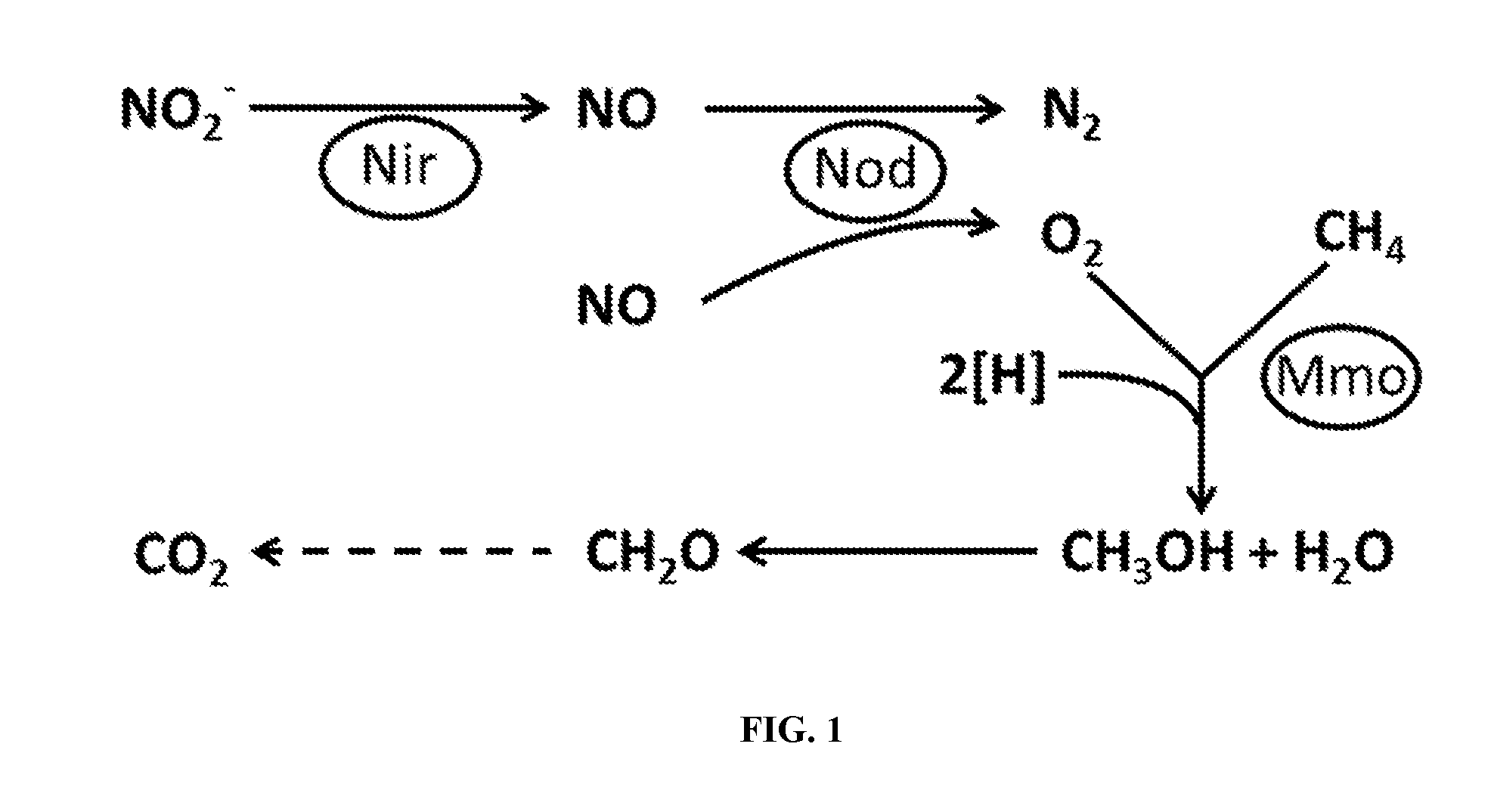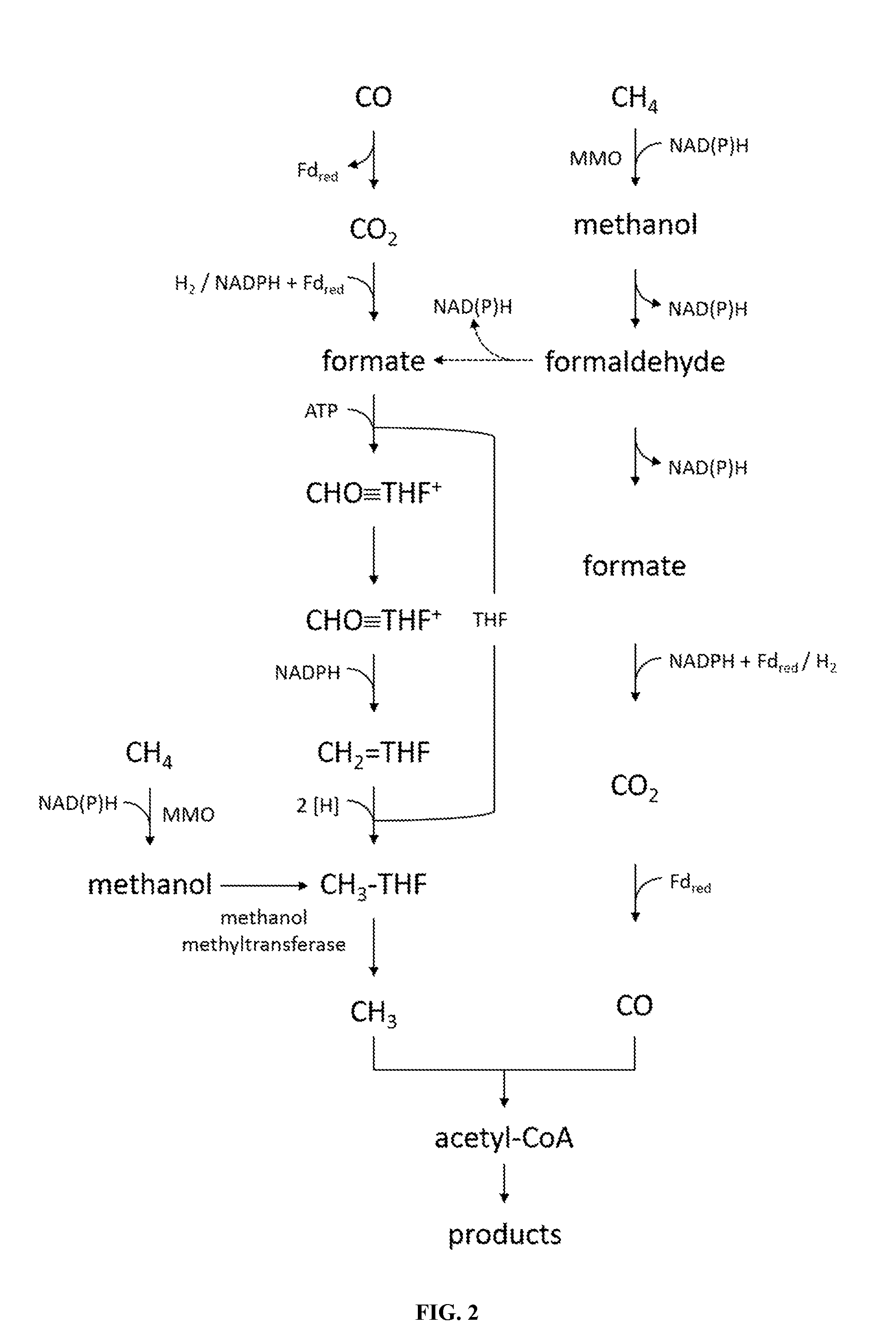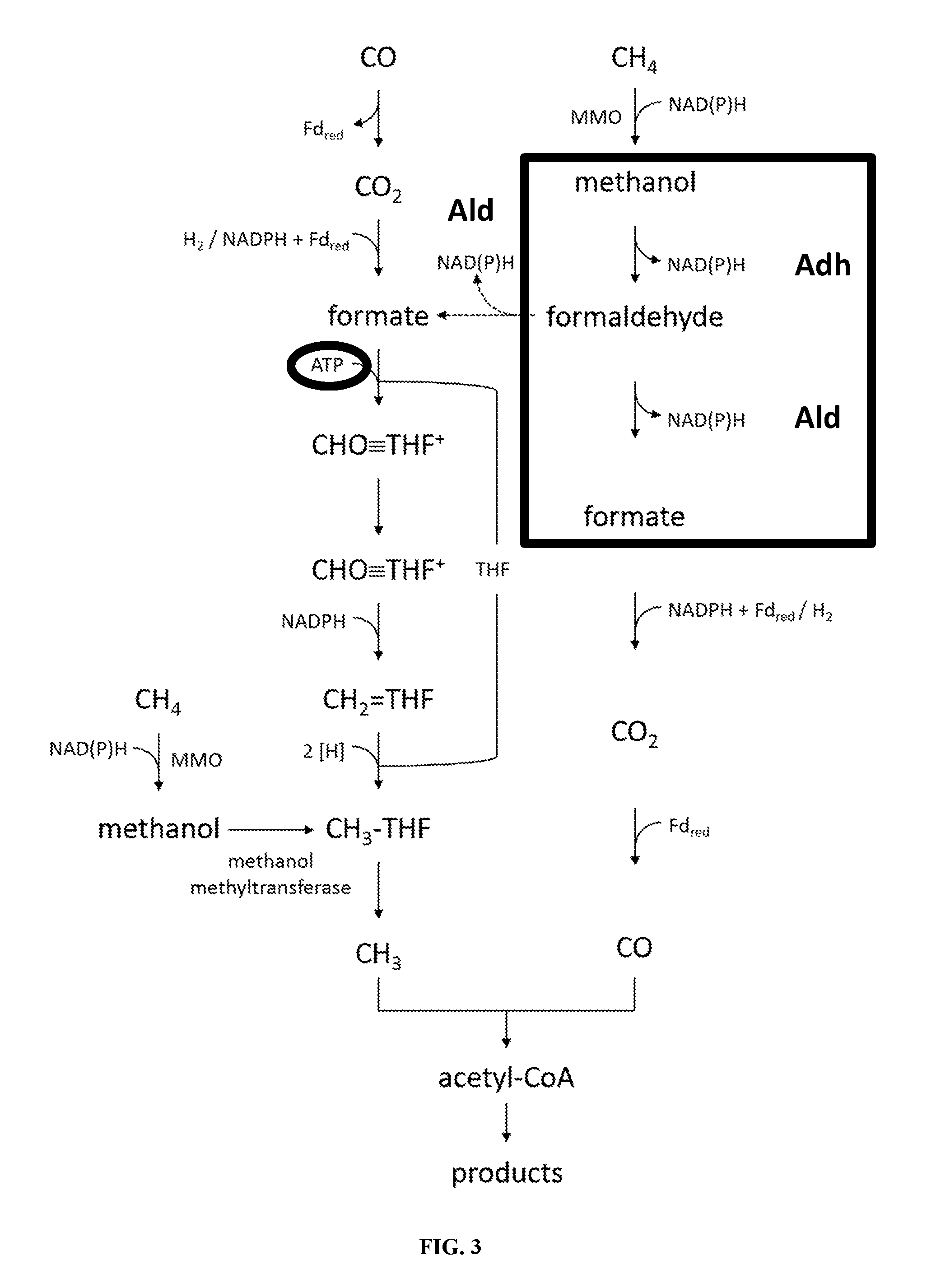Recombinant acetogenic bacterium for the conversion of methane to products
a technology of acetogenic bacteria and methane, which is applied in the field of recombinant acetogenic bacteria for the conversion of methane to products, can solve the problems of not being able to isolate pure culture, and not being able to produce commercially valuable products
- Summary
- Abstract
- Description
- Claims
- Application Information
AI Technical Summary
Benefits of technology
Problems solved by technology
Method used
Image
Examples
example 1
[0061]This example demonstrates the feasible conversion of methane to a target product using a recombinant acetogenic bacterium.
[0062]A genome-scale metabolic model of C. autoethanogenum similar to the one described by Marcellin (Low carbon fuels and commodity chemicals from waste gases—Systematic approach to understand energy metabolism in a model acetogen, Green Chem, 2016) was utilized. Metabolic reactions representing MMO, NIR and NOD were added to this genome-scale model.
[0063]Growth was simulated by flux balance analysis (FBA), using scripts from the COBRA Toolbox v2.0 in MATLAB R2014a (The Mathworks, Inc.) with Gurobi version 6.0.4 as the solver (Gurobi Optimization, Inc.). Exchange reactions were constrained to represent a minimal growth medium supplemented with nitrite. FBA predicts that methane can be utilized as a growth substrate by the recombinant C. autoethanogenum; the results are illustrated in Table 1.
[0064]The maximum theoretical yield of ethanol, an example produc...
PUM
| Property | Measurement | Unit |
|---|---|---|
| Time | aaaaa | aaaaa |
| Substance count | aaaaa | aaaaa |
Abstract
Description
Claims
Application Information
 Login to View More
Login to View More - R&D
- Intellectual Property
- Life Sciences
- Materials
- Tech Scout
- Unparalleled Data Quality
- Higher Quality Content
- 60% Fewer Hallucinations
Browse by: Latest US Patents, China's latest patents, Technical Efficacy Thesaurus, Application Domain, Technology Topic, Popular Technical Reports.
© 2025 PatSnap. All rights reserved.Legal|Privacy policy|Modern Slavery Act Transparency Statement|Sitemap|About US| Contact US: help@patsnap.com



